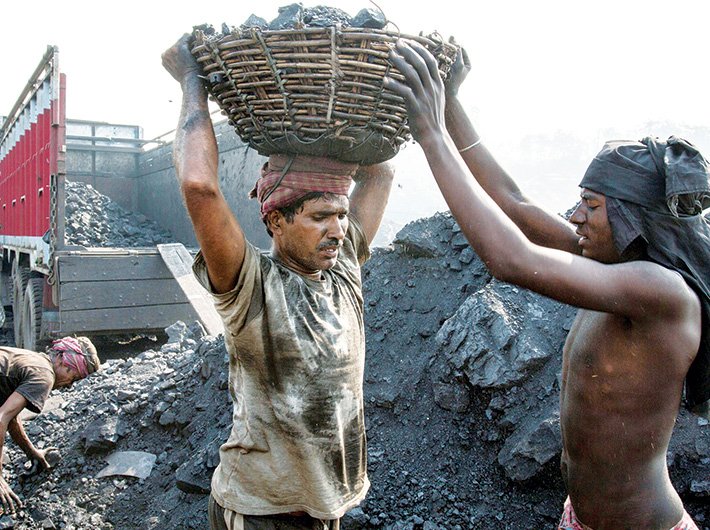January 2015 was a turning point in labour movement as the unity and success was ensured by the workers themselves and the trade unions were only catalysts
It is now accepted in trade union circles that the success of the coal strike early this year has been symptomatic. This strike, against coal sector privatisation, is likely to contribute to the shift in the country’s industrial relations scenario, with far-reaching consequences.
The strike means the third generation reform process is not likely to be a one-sided game as it was believed by the government and the corporate circles. This is likely to make positive impact to the trade union approach and trade union unity.
May Day: Just another day in the life of the worker
It has been a situation which would force the trade union leaders to break out of the earlier mode of approach. With participation of over 85%, the strike could not have been seen as a ritual exercise. In a situation where the economic reform has landed as a matter of compulsion for the people who are promoting private-based economy, the outcome of their approach has been turning into an act of ‘defending ’ the crisis in the first world.
They are not likely to realise by themselves that the matter of addressing the national economy with the content of social equity has been turning notional for them. If the trade union leaders do not stop undermining the movement, they would simply be contributing to strengthening the corporate grip over the working community.
READ: Modifying Marxism
In the historical context, the coal movement should be viewed as a huge action, with colossal involvement of the mining society, not merely as a localised trade union action.
During the strike, the number of people coming out on the streets was larger than the number of workers, as their family members also joined in. This made impossible for the state power to use either police or the army. The country has not seen such a massive strike since 1977 and no industrial action after the railway strike of 1974 has had such a huge social involvement.
Trade union experts should note one important feature of the current struggle. It is about strike action becoming sustainable only when it assumes national status. If the current coal movement could enlarge to assume national status, it is firstly for the reason that the coal workers – the second largest workforce in the country, next to the railways – happened to be international.
Secondly, its importance in the national economy must mean inheriting a sense of pride. A sense of injured dignity was tormenting the coal pride, partially because of so-called reform and more due to the neglect of the workers. There is no doubt that the sense of disgrace had opened the outlet which found its release through the strike.
This strike rejects the notion which was believed even by many leaders in the trade union circles. It has been that as if the organised workers were illiterate to conceive their own future, ‘degenerated’ to take care of the future generation.
The huge strike vindicates that those notions were the products of trade union relations of earlier generation; and have no reality in the modern context.
The success rate, as well as the element of spontaneity which was observed all through the preparation and participation levels, proves that the workers and the mining society must have been sensing the heat of the volatility involved in the ‘third generation reform’.
It has been a lesson for the next generation worker leaders; as the trade union movement being an applied science, conceiving the notion about the workers mood plays 70% role in orienting the correct strategy for a movement.
It is not only in case of coal struggle alone that a correct strategy has been attained: it has been sought to exercise while doing the herculean task of striking a unanimity of approach and working out an organisational network for involving common workers in that approach.
Workers took the matter into the streets by themselves. Had this intervention not been there, it would have been just impossible to unite and hold all the forces together.
There has been a general impression that five national federations led the strike. But the most heartening aspect has been that the workers brought all the trade unions and groups into the fold of the strike.
Accordingly, probably for the first time any trade union movement after independence has raised a struggle platform combining both the
workers and the society at large.
Therefore, it is common sense that if ‘privatised’ India is identified with reforms, then reforms are identified inevitably with slavery. The reform has gone to such a depth, the limitation of the ruling elite left no door open for return. With the passing time it would become clear that in India the foundation of third generation reforms is built entirely on slavery and there is no option left to escape.
The ground is now getting clear for intensification of conflict of compulsions coming from two opposites. There is no alternative for the trade union movement but to bring the workers on the universal platform of unity which many of the trade union leaders have been failing to recognise. The coal strike has proved that a general urge for unity is a dominating need.
Indian coal workers, regarded as the most illiterate and unaware of social policy, held on because they could see for the first time that the general course of privatisation has been leading itself towards slavery.
Thus the biggest contribution of the strike has been its capability to create a wave by presenting an adequate platform which simultaneously addresses the agenda for recovery against current ailments which had been encompassing the working community and general unity of the Indian working class.
Roy, a former Rajya Sabha member from CPM, is general secretary of Coal Workers Federation of India.
